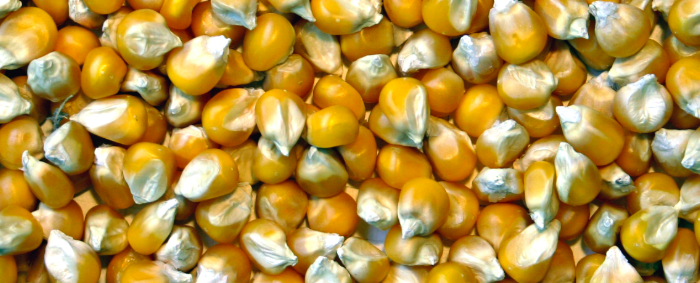
Every summer, the French countryside is covered, as far as the eye can see, with fields of corncobs. No less than 3 million hectares are cultivated in France, year after year, with this grass. It is also the first cereal production in the world! Used exclusively for food and feed for a long time, new outlets are emerging little by little. Maize thus becomes the spearhead of the new “bio” sectors: bioplastics, biomaterials, biogas..
A plant full of surprises
Maize conveys the image of a plant that is harmful to the environment: a major consumer of water and phytosanitary treatments. “Wrong! ” Says Jean Beigbeder, retired corn breeder , co-chair of Pro-Maïs. Corn is a plant from Mexico with its humid summers. It is therefore a grass that needs a significant water intake for its growth. But the big producing countries are countries that enjoy good rainfall and therefore do not need to irrigate … “. Maize is now produced mainly in the corn belt of the United States, China and Brazil. “Irrigation needs arise for countries like Ukraine, but this is marginal on a global scale. “
And corn has many other hidden assets. It requires very little phytosanitary treatment and represents a considerable source of oxygen. 1 hectare of corn produces 16 to 32 tons of oxygen a year, twice more than a hectare of forest! Finally, it displays a particularly low carbon footprint. We speak of plant “C4”: for the same water intake, maize sets a higher amount of carbon and releases a large amount of oxygen.
The development of green chemistry
Corn is a real mine for the green chemistry industry. “In France, 1 million tonnes is produced each year as an alternative to petrochemicals,” said Arnaud Rondeau, vice president of the General Association of Corn Producers. For a grain of corn, 500 different products can come out of the biorefineries. We discover that corn is everywhere: in glue, paper, cosmetics, solvents … And even in our toothpaste! “It is the quality of its starch that allows such a variety of uses,” Arnaud Rondeau analysis.
Bioplastics is one of the sectors in green chemistry that has grown the most thanks to corn. “Bioplastics are already very present in our lives,” says Guilhem Peres, founder of the SME eMotion tech, specializing in the manufacture of 3D printers for bioplastic consumables. Plastic bags, golf tee, some coffee capsules … All these products have the immense advantage of being biodegradable, and therefore of preserving the environment. “
Biogas in France in the near future?
One of the hopes of corn is the development of bioenergy. In Europe, the use of corn as an energy plant has mainly developed in Germany, favored by a voluntarist policy on renewable energies. Result? The appearance of 8,000 biogas producers in 2 decades, of which more than 40% are individual farmers. Total production exceeds 18 billion KWH per year, the equivalent of 2 nuclear power plants. “It’s pig slurry that is used to stimulate the growth of the plant,” says Jean Beigbeder. In addition to the electricity produced, heat is recovered for livestock buildings, greenhouses and homes.
“The selection first made it possible to adapt the corn to different territories. Today, among the very broad biodiversity of existing maize, the breeder identifies which varietal types are best adapted to a particular use and makes them evolve to meet the expectations of society. So we do not use the same corn for our salads as to make bioplastic or biogas … “,concludes the researcher.
Great article, very useful !!